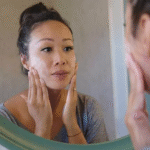Choosing the right skincare and makeup can be confusing when every label claims to be “clean,” “natural,” or “dermatologist‑tested.” The truth is, many cosmetics still contain ingredients that may irritate skin, disrupt hormones, or accumulate in the environment. Learning how to spot and sidestep these red‑flag chemicals keeps your routine safer and your conscience clearer.
Why Ingredient Awareness Matters
Your skin absorbs a portion of what you apply, and daily exposure adds up over time. Avoiding harsh preservatives, allergens, and suspected endocrine disruptors can reduce irritation, long‑term health risks, and environmental harm. With a little label literacy you can make informed choices without sacrificing performance.
Know the Common Offenders
Below is a quick reference list of ingredients many dermatologists, toxicologists, and clean‑beauty advocates recommend limiting or avoiding:
| Category | Ingredient Names on Labels | Why They’re Concerning | Safer Swaps |
|---|---|---|---|
| Preservatives | Parabens (methyl‑, propyl‑, butyl‑, isobutyl‑) | Potential hormone disruption | Phenoxyethanol, potassium sorbate, airtight packaging |
| Surfactants | Sodium lauryl sulfate (SLS), sodium laureth sulfate (SLES) | Strips skin’s natural barrier, irritation | Coco‑glucoside, decyl glucoside |
| Plastics & Texture Agents | Microbeads (polyethylene), acrylates polymers | Environmental pollution, micro‑plastics | Jojoba beads, finely ground bamboo or walnut |
| Fragrance | “Fragrance,” “Parfum” (catch‑all for hundreds of chemicals) | Allergies, headaches, endocrine disruption | Essential oils in low concentration, fragrance‑free products |
| Chemical Sunscreens | Oxybenzone, octinoxate | Coral bleaching, possible hormonal effects | Non‑nano zinc oxide, titanium dioxide |
| Formaldehyde‑Releasing Preservatives | DMDM hydantoin, imidazolidinyl urea, quaternium‑15 | Carcinogen classification, allergic dermatitis | Leuconostoc ferment filtrate, sodium benzoate |
| Ethanolamines | DEA, TEA, MEA | Can form carcinogenic nitrosamines | Glyceryl stearate, cetearyl alcohol |
| Phthalates | Often hidden in “fragrance” | Possible reproductive toxicity | Choose phthalate‑free certified products |
| Siloxanes | Cyclopentasiloxane (D5), cyclohexasiloxane (D6) | Bioaccumulation, endocrine concerns | Plant oils or esters for slip and spreadability |
Master the Ingredient List
- Scan the first five ingredients
They make up the bulk of the product. If any harsh surfactants or questionable preservatives show up here, reconsider. - Watch for umbrella terms
Words like “fragrance,” “aroma,” or “parfum” hide dozens of undisclosed chemicals. Opt for fragrance‑free or clearly labeled essential‑oil blends. - Look for Latin names
Botanical extracts appear in Latin; long chemical strings often tip you off to synthetic additives. Not every chemical name is dangerous, but it prompts further research. - Check for certification seals
Third‑party logos—Leaping Bunny, EWG Verified, COSMOS Organic, ECOCERT—signal stricter ingredient standards and no animal testing.
Build a Safer Shopping Strategy
1. Do a quick database lookup
Websites and apps like EWG’s Skin Deep or INCI Decoder let you paste an ingredient list and receive an instant safety profile.
2. Patch test before full use
Apply new products to a small area behind the ear or inner arm for 24 hours to spot allergic reactions.
3. Choose multi‑taskers
Fewer products mean fewer total ingredients. A tinted mineral SPF or a moisturizer with built‑in antioxidants can replace two or three separate steps.
4. Go fragrance‑free for leave‑on formulas
Cleansers rinse off quickly, but lotions, serums, and creams sit on skin all day. Fragrance‑free versions reduce cumulative exposure.
5. Prioritize packaging
Airless pumps and dark glass bottles reduce the need for strong preservatives and shield light‑sensitive actives.
Ingredient Trade‑Up Guide
| Concern | Traditional Ingredient | Better Alternative |
|---|---|---|
| Preserving lotions | Parabens | Phenoxyethanol + small‑batch production |
| Adding slip to primers | Dimethicone (volatile siloxanes) | Squalane, meadowfoam seed oil |
| Coloring lipsticks | Carmine, synthetic FD&C dyes | Mineral iron oxides, fruit‑pigmented pigments |
| Physical exfoliation | Plastic microbeads | Jojoba ester beads, rice powder |
Reading Between Marketing Lines
Natural: May still contain synthetics; verify full list.
Dermatologist‑tested: Indicates testing, not endorsement.
Hypoallergenic: No legal standard; patch test anyway.
Non‑toxic: Undefined marketing phrase—look for certifications.
Sustainable and Ethical Extras
Opt for brands that publish full sourcing details, use recyclable or refillable packaging, and offset carbon emissions. Ethical production often aligns with cleaner formulations.
Final Thoughts
Avoiding harmful ingredients begins with curiosity and consistent label reading. Once you know the common red flags—parabens, undisclosed fragrance blends, certain chemical sunscreens, and formaldehyde releasers—you’ll find it easier to build a streamlined, effective routine that respects both your skin and the planet. Start small: swap out one high‑use product at a time, choose trusted certifications, and keep a list of safe favorites. Glowing skin and peace of mind can absolutely go hand in hand.
Frequently Asked Questions (FAQs)
1. Are all synthetic ingredients bad?
No. Many lab‑made ingredients are safe, stable, and eco‑friendly. Focus on evidence‑based safety rather than whether something is natural or synthetic.
2. How can I tell if a product is cruelty‑free?
Look for Leaping Bunny, PETA’s Beauty Without Bunnies, or Cruelty Free International logos, and confirm the brand’s policy on its website.
3. Does “fragrance‑free” mean no scent at all?
Often yes, but some fragrance‑free products have a mild natural scent from plant oils. The key is that no additional fragrance chemicals are added.
4. Is mineral sunscreen always safer than chemical sunscreen?
Mineral filters like non‑nano zinc oxide are less likely to irritate sensitive skin and have fewer environmental concerns, but they must still be broad spectrum and SPF 30 or higher.
5. How long should I keep a product before tossing it?
Check the Period After Opening symbol (e.g., 12M for 12 months). Discard if texture, color, or smell changes—expired products can harbor bacteria or degrade into irritants.







